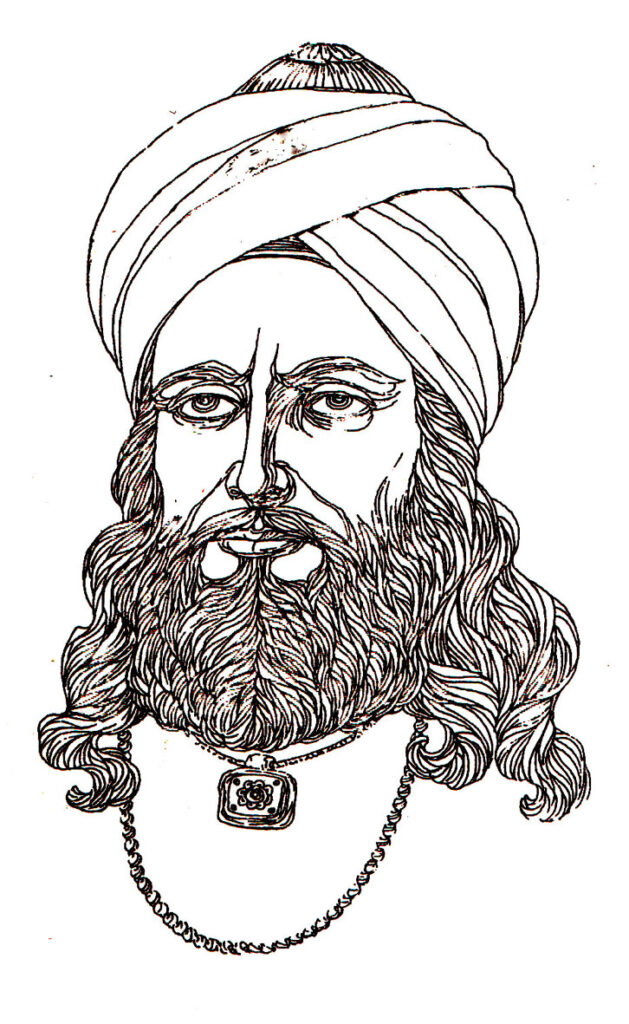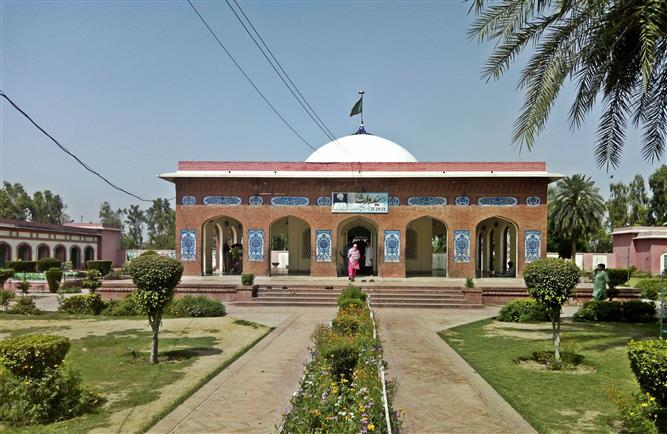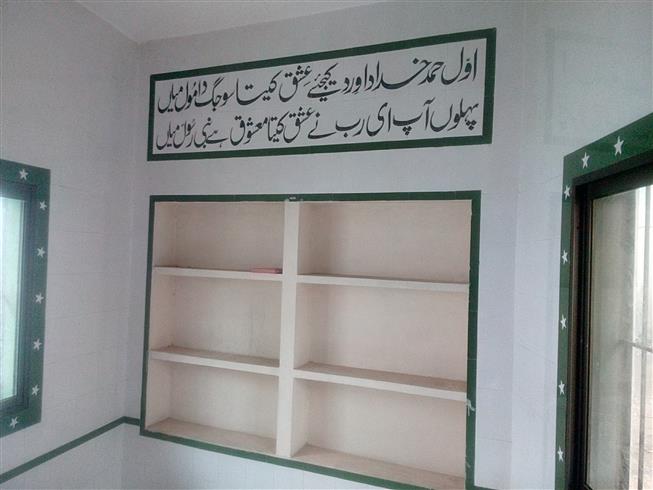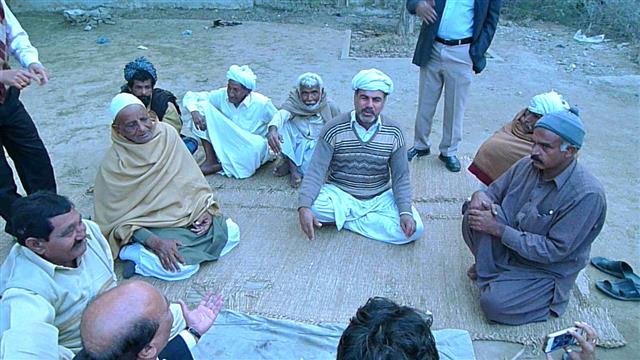PUNJAB (BRITISH INDIA):
Waris Shah’s 300th birth anniversary on January 23 may have gone unnoticed, but the Sufi poet’s magnum opus — a narrative of threatened love in a space governed by unbending socio-religious norms — still finds huge resonance. He remains, by far, the most important Punjabi qissakaar.

I FIRST heard the name literally in my infancy. In the semi-refugee colony where I grew up in Delhi, I recall faint invocations of this name, Waris Shah. It must have been in the late 1950s.
The streets of Naiwalan were now full of people who had been displaced from the multiple regions of Punjab during the Partition of 1947. They spoke different dialects and were not always comfortable conversing with people from other regions.

There were a few culturally uniting features though. For the young, the great unifier was the Indian film music and All India Radio. For the rest, there were the gurdwaras and the unbroken chain of Gurbani recitation, and singing on the one hand and the rare but energising jagrata gatherings on the other. The Muslim presence had nearly been wiped out from the cultural imagination of the Punjabis, who had been thrown into alien lands full of unfriendly sounds. However, the feminine work culture had retained an inherent link to a past. Early morning, my mother and foster grandmother would recite verses from Guru Granth Sahib under their breath even as they went about setting up the house for the day ahead. Most prominently, we would overhear Baba Farid being mentioned — from whom the Sufis had drawn much of their local identity. That was one side of the story. The other was Farid’s formidable presence within the field of language from where all Punjabis drew their ethical core. The very grain of their existence would wake up to his ‘dar derveshi’.

Outside of this religio-cultural space, there were two Muslim poets that, as children, we heard on almost a daily basis: Baba Bulleh Shah and Waris Shah, who could well have been near contemporaries, separated as they were by nearly 40 years of age difference. I wonder if the two ever met, especially as both shared a fiercely transgressive spirit.
Waris Shah’s 300th birth anniversary, which fell on January 23, went unnoticed on both sides of Punjab. That the State is past caring is a no-brainer, but how could the community of litterateurs forget the day?
Waris Shah was born in Jandiala Sher Khan of Sheikhupura (now in Pakistan Punjab) at a time when the Mughal empire was showing early signs of disintegration. There was, hence, an abounding atmosphere of increased repression and latent rebellion all around. Waris grew up as an orphan. He is said to have been a keen observer of the ordinary life — a fact to which his magnum opus bears testimony. He remains, by far, the most important qissakaar of our language and among the finest across the globe.

There were a few editions of Waris Shah in Gurmukhi and Shahmukhi in our library, which I was unfortunately not able to read as I went to a Hindi medium school. However, there was one particular passage from ‘Heer’ — “Doli charhdeyaan maariyaan Heer cheekan” (Ascending the palanquin, Heer cried out bitterly, complaining) — which was repeatedly played on the radio and which initially seemed to catch everyone’s attention. The singer happened to be the iconic Asa Singh Mastana, who was more than an acquaintance of my father and had visited us a few times in the 1960s. His arrival was always greeted with excitement. Those were the days when I heard Waris Shah being mentioned in almost axiomatic two-liners that the wise and elderly would often use to clinch an argument…
It was much later in life that I heard Mastana singing a passage from ‘Heer’, where this newly married rebel of a girl named Heer pours her heart’s pain out to her father before being put into the palanquin and ceremoniously sent away to her husband’s home. This singing seemed as much about forced exclusion as the pain and suffering the refugees had experienced as part of the exodus from their homeland from which they had not quite recovered.
_______________
Kehi Heer di tareef kare shayar:
Matthe chamakda husn maahtab da ji…
How does the poet praise Heer:
Her crown shimmers like the beauteous moon…
A Couplet from Heer
Begin by remembering the Cosmic Self
Who created the world in the image of love
He began first by Himself falling in love
The Prophet Nabi Rasool is His beloved
Opening Couplet from Heer
Aashiq, bhaur, faqeer te naag kaale/bhaajh mantron mool na keeliye ni
Lovers, bumblebees, faqirs and king cobras cannot be tamed without special spells
A Couplet from Heer
__________________
The song was unlike any other I had heard as a child. The melody unfolded in a slow, languorous narration. It had a feel of haunting simplicity that encouraged many of us to try it out in the seclusion of our houses. However, things became a little complex when within the same slow rendition, there arose a sudden burst of fast, quivering, high notes around a single word, or even a lone vowel sound. It was like an unexpected gush of turbulence in the otherwise gently flowing waters. This melodic surge returned equally suddenly to its sedate narrative core, but by now the maelstrom of emotions that had been stirred moved the young and old to look deeply into what had hit them.
Women often cried as the poetic narration took off in musical notes. Men, too, were visibly moved even if they soon recovered their wits to make parodies of these verses to restore their somewhat damaged masculine ego back to health. Many years down the line, when I became a little known as a singer, the impassioned audiences would still persist with requests to sing Heer’s heartbreaking send-off, even if that passage had by then been declared as an unacceptable interpolation.
‘Heer Waris’ stood out as an emotive link to our erased folk memory. The poetic thread ran through an incredibly detailed landscape of a people’s life — their mornings, evenings and nights; their work cultures; their rites of passage; their undying bonds, desires and envies; their transgressions of the social, religious and gender codes; their masquerades. No other poet had been able to embark upon such a vast cultural map with a comparable poetic intensity and masterly conviction. Through his qissa, one could enter the playful piety of playful hamds (Odes to the Almighty) and manqabats (Odes to the Dervishes) of the Punjabi Sufis; the spaces of longing through the lived carnivals and heartbreaks of the ordinary lives; thus, the Punjabi qissakari tradition would come alive spontaneously and with unmistakable signs deep of yearning, despite the unexpunged ghosts of Partition. Thanks to Waris Shah, we were still the people that we once were… Heer-Ranjha’s tale of almost willed displacement in languorous pursuit of love, as against the forced exodus of the people, had its lasting lure. There was still hope for a creative resurgence of a community of people who had walked through the inferno of 1947 and lost the rhythmic beat of celebration and had fallen into a litany of pain…
I walked across the other part of Punjab primarily through how ‘Heer’ was rendered by a range of iconic singers and how it had been received by both the ordinary folks and the cognoscenti. The sheer experience of being exposed to such an incredible range of styles and diverse grain of voices was a heady experience. To begin with, I was introduced to Tufail Niazi Saab’s rendition by a non-Punjabi and my dearest friend, the late Safdar Hashmi. Tufail Saab is, in fact, the reason why I took to singing beyond the anonymity of my house. Listening to his singing, I understood why ‘Heer’ demanded a melodic narration without the support of percussions. Both he and Inayat Bhatti Saab would interrupt their singing with ready dialogic wit and commentary. I heard the distinct flavours of their dialects from Doab and Gujarat interacting with the poetic registers of Waris Shah’s Majhaili. This was quite unlike the ‘Heer’ I had heard in our part of Punjab. This also became a way of recovering a lost cultural selfhood that the unfortunate Partition had buried so insensitively. Through ‘Heer Waris’, I was able to significantly break down the uneasy gap that had created a tangible ‘other’.
Much later, when I was gifted an audio tape of ‘Heer Waris’ rendered by the matchless Sharif Ghaznavi by Ajoka Theatre’s Shahid Nadeem, I felt nearly ready to take the narration of ‘Heer Waris’ on to public platforms. It was the time in the late ’70s and the entire following decade when nothing was making sense anymore. The State and the ideologues of a particular persuasion were engaged in a fiery exchange. For me, the singing of ‘Heer’ by Waris and the Kaafis of Baba Bulleh Shah sublimated into cri de coeur and eventually an act of faith. The melody, its projection and its interpretations on stage were beginning to change, especially as the real stakes of existence were getting increasingly intractable and no longer easily resolvable. Waris’ text was coming out of a limited cultural interiority to now address larger anxieties all across. This was approximately the time when I heard Rabbi Shergill’s angry outpouring to the so-called neutral letter writer about his grievously wounded love. As Bob Dylan would have put it, ‘The times they are a-changin’…
— The writer is a composer, musician
source: http://www.tribuneindia.com / The Tribune / Home> Features / by Madan Gopal Singh / February 27th, 2022








